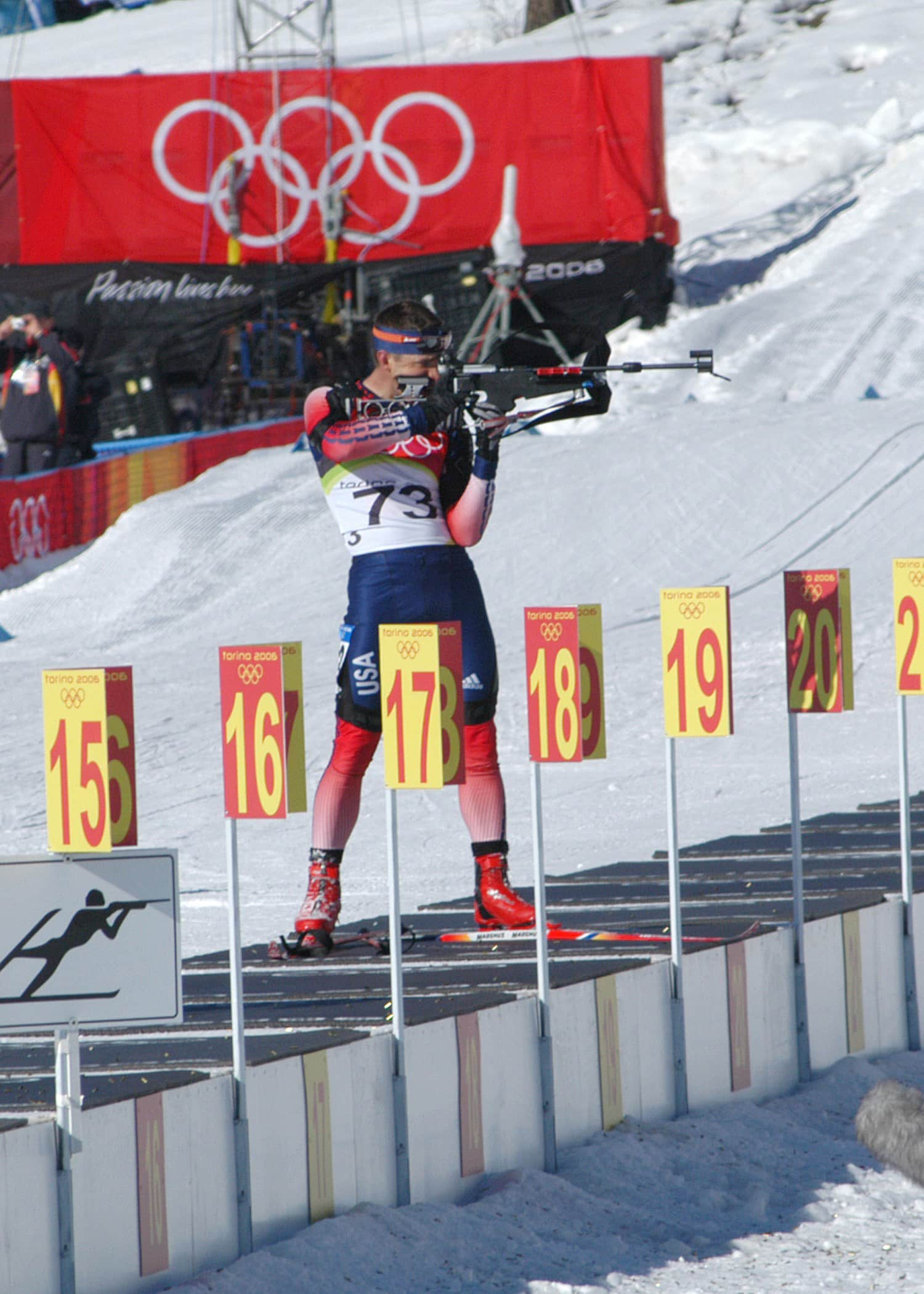A Quick Primer on the Winter Biathlon
James Swan 12.05.13

You may have seen the news stories about Russian commuters doing squats while waiting in line to catch a subway. Currently, if you do 30 squats, you qualify for a complementary ticket, as well as helping keep yourself in shape.
The squat promotion also helps draw attention to the upcoming Winter Olympics from February 7 to 23 in Sochi, on the Black Sea.
Lots of people in the United States will be watching various downhill skiing events. What event in the 1994 Winter Olympic Games that were held in Lillehammer, Norway, drew the largest crowd? Ski-jumping? Downhill or giant slalom? No, it was the biathlon, a sport that many here in the States do not know much about, but is wildly popular in Northern Europe.
In case you aren’t sure just what the biathlon is, it’s a cross-country ski race where contestants periodically stop to fire .22 rifles at targets 50 meters away. Winter biathletes use cross-country skis to traverse the course while the summer competitors are on foot, but the sport is essentially the same. The winner is determined by the fastest time. Accuracy in shooting definitely counts, but it’s factored in by penalties for misses. In the Winter Olympics, for each “miss,” a biathlete must ski an extra 150-yard penalty lap before returning to the course.
The first winter biathlon contest was held in 1767, between Swedish and Norwegian border patrols. It entered the Winter Olympics as a demonstration in 1924, but didn’t become a regular event until 1960.
During the five days of competition at Lillehammer, more than 500,000 wildly cheering spectators turned out for the winter biathlon events, filling the 80,000-seat stadium, and spilling over into the woods. Cowbells were the most popular way to cheer on biathletes.
In Northern Europe, between December and March, World Cup biathlon matches draw the largest television audiences of any winter sport in Europe. The winter biathlon is more popular than the Super Bowl.
Over 100 countries compete in some two dozen Olympic “weapons” sports, such as the biathlon, pentathlon, skeet, trap, pistol, rifle, archery, and fencing in the summer Olympic Games. The biathlon is the only winter Olympic shooting sport, and the only sport to appear in both in the summer and winter Olympics.
The winter biathlon is an intense sport requiring extraordinary skills. After several kilometers of flat-out skiing, shooters unshoulder their bolt-action .22 rifles without optical sights that hold five shots and take one of two firing positions. From the standing position the targets are three-inch-wide metal discs. The prone position targets are about the size of a half dollar.
Special equipment includes a rifle sling and harness, extra-strong boots, ammunition for the rifle, special front and back sights, extra-long ski poles, and a suit that eliminates wind drag as much as possible, much like what downhill skiiers wear.
There are four different races for men and four for women, with the relay being the only team event. The Russians held the team honors for the first six Winter Games, so they are favored. Competitions that combined cross-country skiing and rifle marksmanship were part of the Red Army’s training beginning in the 1920s and 30s, and you have seen thugs with guns on skis chasing James Bond in The Spy Who Loved Me and several others.
Men and women each have four events: the sprint (10 kilometers for men, 7.5 kilometers for women) with two stops to shoot; the pursuit (12.5 kilometers for men, 10 kilometers for women), with four stops; the individual, which is like a marathon (20 kilometers for men, 15 kilometers for women) with four stops; and the team relay with four people each traveling 7.5 kilometers and shooting at two stops during their lap.
The skis that biathletes use are shorter than regular cross-country skis. According to Jerry Kokesh, Development Director of the US Biathlon Association, about 95 percent of Olympic biathlon rifles are made in Germany by Anschutz. They cost about $2,100 and each contestant will pay another $500 to $600 to have the stock customized.
There are over 200 biathletes established for the upcoming games, about equally balanced between men and women. Nations qualify for the event based on their competitors’ performance in World Cup events and World Championships. To be eligible you must be in either the top 20 percent of biathletes in World Cup standing, or the top half of the World Junior championships. Each country can have up to four athletes per event. The US team is currently being selected.
The US hasn’t been a strong contender in the niathlon to date, one reason being that currently the NCAA doesn’t sanction the sport. There are, however, 1,000 members of the US Biathlon Association, and clubs and youth teams and leagues are springing up all across the country.

